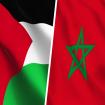
Access to funding is crucial for the development of business activity and economic growth. The Moroccan financial system has been substantially reformed since the early 1990s to increase its efficiency and improve its international attractiveness
Indeed, numerous reforms aimed at bringing Moroccan regulations into line with international standards have been undertaken in order to provide Morocco with a resilient, modern and efficient financial system able to adequately mobilise savings, ensure their efficient allocation, and contribute to the evolution of bank credits and the development of new innovative financing instruments such as microfinance and crowdfunding.
Moreover, and with a view to ensuring better coordination and more effective control, the Moroccan financial sector is currently under the supervision of supervisory authorities that are independent in the performance of their duties, such as Bank Al-Maghrib (BAM), the Moroccan Capital Market Authority (AMMC), and the Supervisory Authority of Insurance and Social Welfare (ACAPS) .
In the same context, and in order to meet the financing needs of investors, the public authorities have taken several measures to broaden and diversify the financial instruments, products and services offered. Among these, it is worth mentioning the modernisation of the banking law in 2014, the establishment of the legislative framework governing the activity of participating banks, the law no. 45-12 on securities lending, as well as the modernisation of the legal framework governing the securitization of receivables which will regulate the emission of Sukuks ... etc.
The banking sector in Morocco stands out as one of the strongest in Africa, with 24 banks, 5 of which are participatory and 6 quoted on the Stock Exchange, 28 financing companies, 6 offshore banks, 13 micro-credit associations and 13 payment institutions. According to the Ministry of Economy and Finance, outstanding bank credits reached more than MAD 870.5 billion in 2018, representing more than 79% of the Kingdom's GDP.
In addition to an extensive network of banks with more than 6,500 bank's ATMs, Moroccan banks also have a strong presence in all regions of the continent, and are a market leader in West and Central Africa.
The Central Guarantee Fund (CCG ), a public financial institution assimilated to a credit institution, that supports companies through guarantees, co-financing and equity financing . It guarantees between 50 and 80% of the credits granted by banks, leasing companies, venture capital organisations and associations supporting entrepreneurs, thus facilitating access to financing for companies. Its activity in favour of TPMEs totalled MAD 20.5 billion of guaranteed credits in 2018 for nearly 10,800 financing files. The creation of Casablanca Finance City (CFC) in 2010, which stands as the leading financial centre in Africa, helped transform the city into a regional financial hub. This financial marketplace offers an integrated ecosystem to attract investments and financing to Africa.
In addition, more than 150 companies have the CFC status, which is a label giving entitlement to several advantages, including tax exemptions. Finally, several international reports attest that the Moroccan financial sector has been developed satisfactorily over the last decades.
In this regard, it is worth mentioning the Index of Economic Freedom which places the Moroccan economy in the moderately free category.



